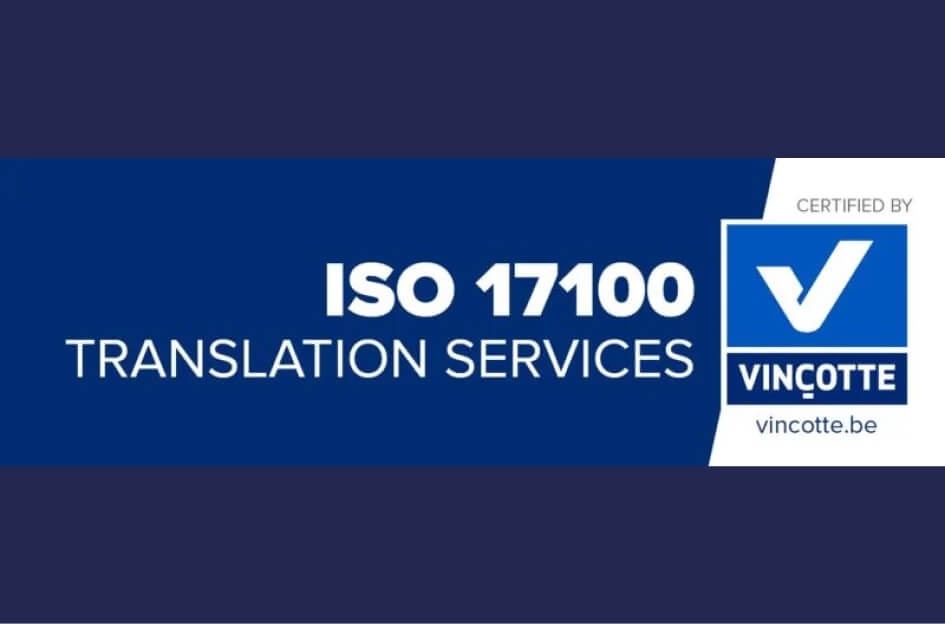Welcome to the world of software localization, where computer programs get a passport to explore global markets! So, you’re curious about software localization? Great! Let’s unravel the localization process and discuss its importance in today’s interconnected world.

Imagine: you just developed an incredible software which can potentially revolutionize global industries. But did you consider the fact that your masterpiece is available in one language accessible to limited audience. Countless users unfamiliar with your app’s language must be muttering “What on earth does this mean?” That’s where software localization swoops in as the superhero of internationalized software. Localization is the process that makes your app accessible and user-friendly for every language speaker globally.
But it’s not all smooth sailing. Software localization can be challenging. From managing complex localization projects to finding skilled translators who can do more than simple translation, there are hurdles along the way. However, with the right tools and a dedicated localization team by your side, these obstacles can be overcome.
So buckle up (oops… I mean prepare yourself) for an exciting journey into the realm of software localization! In our upcoming blog posts, we’ll dive deeper into various aspects of localization solutions and share tips on how to make your software shine across borders.
Understanding the Process
Software localization is a crucial step in reaching global markets and expanding the user base of any software product. It is complex process that involves adapting software to suit the cultural preferences and linguistic requirements of different target regions. By understanding the software localization process, businesses can ensure their products resonate with users worldwide.
Overview of the steps involved in localization software process
The software localization process typically consists of several key steps that ensure a smooth transition from software development process to whole localization process:
Project analysis: The initial phase involves analyzing the scope and requirements of the project. This includes identifying target markets, languages, and cultural considerations.
Resource preparation: In this stage, necessary resources such as translation memories, glossaries, and style guides are compiled to maintain consistency throughout the localization process.
Content extraction: Developers extract all translatable content from the source code or files for translation purposes.
Translation and adaptation: Professional translators localize all textual elements into the target native language while considering cultural nuances and adapting software content accordingly.
Linguistic testing: To ensure accuracy and quality, linguistic testers review translated content for any linguistic errors or issues that may impact user experience.
Functional testing: Once translated content is integrated back into the software, functional testers verify that all localized features work seamlessly without any technical glitches.
Bug fixing: Any bugs or issues identified during functional testing are fixed by developers before proceeding further.
Final testing and delivery: The final stage involves comprehensive testing of both functionality and linguistics to ensure a flawless end product. Upon successful completion, localized versions are delivered for distribution in respective markets.
Key stakeholders and their roles in the process
Several stakeholders play vital roles throughout the software localization process:
Development team: They provide support by extracting translatable content from source files and integrating localized assets back into the software.
Localization project manager: Responsible for overseeing the entire localization process, ensuring timely execution, and coordinating efforts between different teams.
Translators: Professional linguists who translate and adapt the content into the native language while maintaining cultural sensitivity.
Linguistic testers: They review translated content for linguistic accuracy, ensuring that it aligns with local norms and expectations.
Functional testers: Their role is to test localized software versions for any functional discrepancies or bugs that may arise during the localization process.
Importance of cultural adaptation and linguistic accuracy
Cultural adaptation and linguistic accuracy are paramount in software localization. Adapting a product to suit the preferences, customs, and cultural sensitivities of a target market enhances user experience and fosters engagement. By using appropriate language conventions, idioms, and expressions familiar to users, businesses can establish a connection that resonates on a deeper level.
Moreover, linguistic accuracy ensures that the localized software interfaces and functions flawlessly without any language-related issues. It eliminates potential misunderstandings or misinterpretations that could hinder user adoption. A meticulous focus on both cultural adaptation and linguistic accuracy helps businesses build trust among their global user base.
Best Practices for Successful Software Localization
Conducting thorough market research before starting the localization process
Research your target market before starting your app localization project. Market findings give you a deep understanding of your target audience’s needs and preferences. Information on local culture, language nuances, and regional requirements helps tailor your software to resonate with users in the target market.
Pro tip: Consider engaging with local focus groups or conducting surveys to gain valuable insights into user expectations. This will help you identify any potential barriers or challenges that may arise during the localization process.
Creating a comprehensive localization strategy and timeline
A successful software localization project requires careful planning and organization. To ensure smooth execution, it is essential to create a comprehensive software localization tool, strategy and timeline. This involves setting clear goals, defining roles and responsibilities, and establishing realistic deadlines.
To streamline the process, consider breaking down the localization tasks into smaller milestones. This allows for better tracking of progress and enables timely adjustments if needed. Having a well-defined human translation strategy helps maintain consistency across different language versions of your software.
Success in software localization relies on adhering to industry standards. Ensure that your team follows established best practices regarding file formats, encoding schemes, character limitations, and other technical aspects. Adhering to these standards not only facilitates the translation process but also minimizes potential issues during implementation.
Collaborating closely with translators and native speakers for accurate translations
Accurate translations are paramount when localizing software for different markets. To achieve this level of accuracy, it is essential to collaborate closely with professional translators who are native speakers of the target language(s). Their expertise ensures that all textual elements within your software are translated correctly while maintaining context and meaning.
Regular communication with translators is key throughout the entire localization process. Providing them with detailed instructions regarding tone of voice, cultural references, or any specific terminology unique to source language and to your software will help them deliver high-quality translations.
Furthermore, involving native speakers in the localization process can provide valuable insights into linguistic nuances and cultural sensitivities. Their feedback can help fine-tune the translated content to resonate better with the target audience.

Exploring Different Approaches: Waterfall vs Continuous Localization
Understanding the traditional waterfall approach to software localization
The waterfall software localization approach follows a linear process, where each step is completed one after the other. Localization typically happens at the end of the development cycle, after finalizing the source code.
This approach offers structured and organized workflow, aiding in planning and resource allocation. It ensures comprehensive localization before proceeding.
However, it has downsides. Late-stage localization can be time-consuming and expensive when changes are needed. Additionally, issues during testing or user feedback may necessitate revisiting earlier steps in the process.
Exploring the benefits of continuous localization methodologies
Continuous localization offers an alternative approach that focuses on integrating translation efforts into every stage of software development. Rather than waiting until the end, continuous localization involves translating software strings as soon as they are created or modified right to left languages.
One significant advantage of continuous localization is its ability to provide faster time-to-market for localized versions of software products. By incorporating translation early on in the development process, companies can release their products simultaneously across different regions without delays caused by traditional sequential workflows.
Another benefit lies in its flexibility and adaptability. Continuous localization allows for real-time adjustments based on user feedback or market demands. This means that updates can be implemented swiftly without disrupting ongoing development cycles.
Furthermore, continuous localization promotes collaboration between developers and translators throughout the entire project lifecycle. Regular communication ensures that potential issues are identified early on and resolved promptly.
Choosing the right approach based on project requirements and timelines
When deciding between waterfall and continuous localization approaches, project requirements and timelines play a crucial role. Consider the following factors to make an informed decision:
Project complexity: If the project involves multiple languages and requires extensive translation, the structured nature of the waterfall approach may be beneficial.
Time constraints: If time is of the essence and quick releases are essential, continuous localization can help meet tight deadlines.
Resource availability: Evaluate the availability of translators and localization tools. Continuous localization may require more resources upfront but can offer long-term efficiency gains.
User feedback integration: If incorporating user feedback during development is a priority, continuous localization allows for immediate updates based on user input.
Optimizing Source Files and Resource Management in Localization
Preparing source files for efficient translation workflows is crucial in ensuring a smooth software localization process. By following a few tips, you can streamline the translation process and minimize potential errors or delays.
One essential tip is to organize your resource files effectively. Categorize them based on their type, such as software strings, images, or audio files. This categorization makes it easier for translators to locate specific resources and reduces the chances of missing any during the localization process.
Another useful approach is to use version control systems (VCS) to manage localized resources efficiently. VCS allows you to track changes made to your source files over time and maintain different versions of localized content. This way, if any issues arise during localization, you can easily revert back to previous versions without losing progress or risking data corruption.
Implementing automation, machine learning and machine translation tools further enhances resource management for software developers and localization experts. These tools help automate repetitive tasks like extracting strings from code, generating translation files, and integrating translated content back into the software. By reducing manual effort, automation streamlines the entire localization workflow and improves overall efficiency.
To optimize source files specifically for translation workflows, consider these additional tips:
Use standardized file formats: Choose file formats that are widely supported by translation tools and avoid proprietary formats that may require additional conversion steps.
Minimize hard-coded text: Avoid embedding text directly within code or user interface elements as it makes updates challenging during translation.
Provide context information: Include contextual details alongside strings to help translators understand how they appear within the software’s interface.
Separate translatable content: Isolate translatable strings from non-translatable elements like code snippets or variables.
Consider these best practices:
Maintain a centralized repository: Store all resource files in a central location accessible by both developers and translators.
Use clear naming conventions: Organize resource files with descriptive names to ensure easy identification and avoid confusion.
Implement a review process: Establish a systematic review process to validate localized resources before integrating them back into the software.
By following these guidelines, you can optimize your source files and resource management in software for localization teams. Efficiently preparing source files, utilizing version control systems, and implementing automation tools will enhance the entire localization workflow, saving time and ensuring accurate translations.
Enhancing User Experience (UX) in Software Localization
Developing software that caters to a global audience requires more than just translating the text. It involves adapting user interfaces, incorporating local preferences, and conducting usability testing with target users.
Adapting User Interfaces to Suit Different Languages, Cultures, and Writing Systems
Adapting user interface (UI) for different languages, cultures, and writing systems is a key challenge in a successful localization process. A well-designed user interface (UI) provides easier software navigation for users from various regions. UX designers play a vital role in this process by considering cultural nuances and designing intuitive interfaces.
To achieve an optimal user experience across different locales, developers must take into account various design elements such as layout, typography, colors, and icons. For example:
Layout: Designing a flexible layout that accommodates varying text lengths is essential. Text expansion or contraction should not disrupt the overall design or functionality.
Typography: Choosing appropriate fonts that are readable for different scripts is crucial. Some languages require specific characters or ligatures that may not be present in standard fonts.
Colors: Colors carry cultural significance and can evoke different emotions across regions. Adapting color schemes based on cultural preferences is important for creating an inclusive UX.
Icons: Using culturally neutral icons helps ensure universal understanding of actions within the software.
Incorporating Local Preferences into the Localized Version of Software
Localization goes beyond language translation; it involves tailoring the software to meet local preferences. This includes incorporating region-specific date formats, currency symbols, measurement units, and other localized elements.
By integrating locale data into the software’s backend systems, developers can dynamically adjust these preferences in mobile apps based on each user’s location settings. This allows international users to seamlessly interact with the software, making it feel familiar and relevant to their needs.
For instance, a software application catering to a global user base should:
Date Formats: Display dates in the format preferred by the user’s locale (e.g., MM/DD/YYYY or DD/MM/YYYY).
Currencies: Show prices and monetary values in the local currency, with appropriate symbols or formatting.
Measurement Units: Provide options for users to select their preferred unit of measurement (e.g., metric system or imperial system).
By incorporating these localized elements into web apps, developers can create a personalized experience that resonates with users from different regions.
Conducting Usability Testing with Target Users
To ensure a seamless user experience, conducting usability testing is crucial during the software localization process. This involves gathering feedback from target users who represent the intended audience of the localized version.
Usability testing helps identify potential issues and areas for improvement before releasing the software to end-users. By involving users from different regions and cultures, developers gain valuable insights into how well the localized software meets their expectations.
During usability testing sessions, developers can focus on aspects such as:
Navigation: Evaluate whether users can easily find desired features and navigate through different sections of the software.
Action Buttons: Assess if action buttons are labeled clearly and perform as expected across various languages.
Language Accuracy: Verify that translated text accurately conveys the intended meaning without any grammatical or contextual errors.
**
Maximizing ROI through Effective Software Localization
Congratulations! You’ve now gained a deeper understanding of the software localization process and explored best practices for successful implementation. You’ve also learned about different approaches such as Waterfall and Continuous Localization, as well as optimizing source files translation memory and resource management in localization. Lastly, we discussed the importance of (UX) enhancements in software localization.
Now, it’s time to put everything into action. You can expand your reach to global markets, increase customer satisfaction, and ultimately maximize your return on investment (ROI By implementing cost effective, software localization strategies. Evaluate and improve your localization efforts based on user feedback and market trends. So, take the leap into software localization and unlock new opportunities for growth!
FAQs
Why is software localization important?
Software localization adapts your product or service to different languages, cultures, and markets. Software localization personalizes user experience and makes your app resonate with your target audience, leading to increased user engagement and customer satisfaction.
How long does the software localization process typically take?
The software localization process duration depends on project complexity, content volume, language requirements, and resources. Hire a professional localization team who can provide accurate timelines based on your specific project needs.
What are the key challenges in software localization?
Some common challenges in software localization include maintaining consistency across multiple languages, adapting content for different cultural norms and preferences, managing frequent updates or releases efficiently, ensuring accurate translation of technical terms or jargon, and coordinating collaboration between development teams, localization engineers and translators.
How can I ensure quality in my localized software?
To ensure quality in your localized software, consider working with experienced linguists and localization service provider experts who specialize in both translation and subject matter expertise related to your industry. Implement a robust quality assurance process that includes linguistic review, functional testing, and user acceptance testing to identify and address any issues before releasing the localized software.
Can I localize my software for multiple languages simultaneously?
Yes, it is possible to localize your software for multiple languages simultaneously. However, it requires careful planning, coordination, and effective project management to ensure smooth execution. Working with localization service providers who are experienced in managing multilingual translation projects can greatly simplify the process and help you achieve efficient results.




